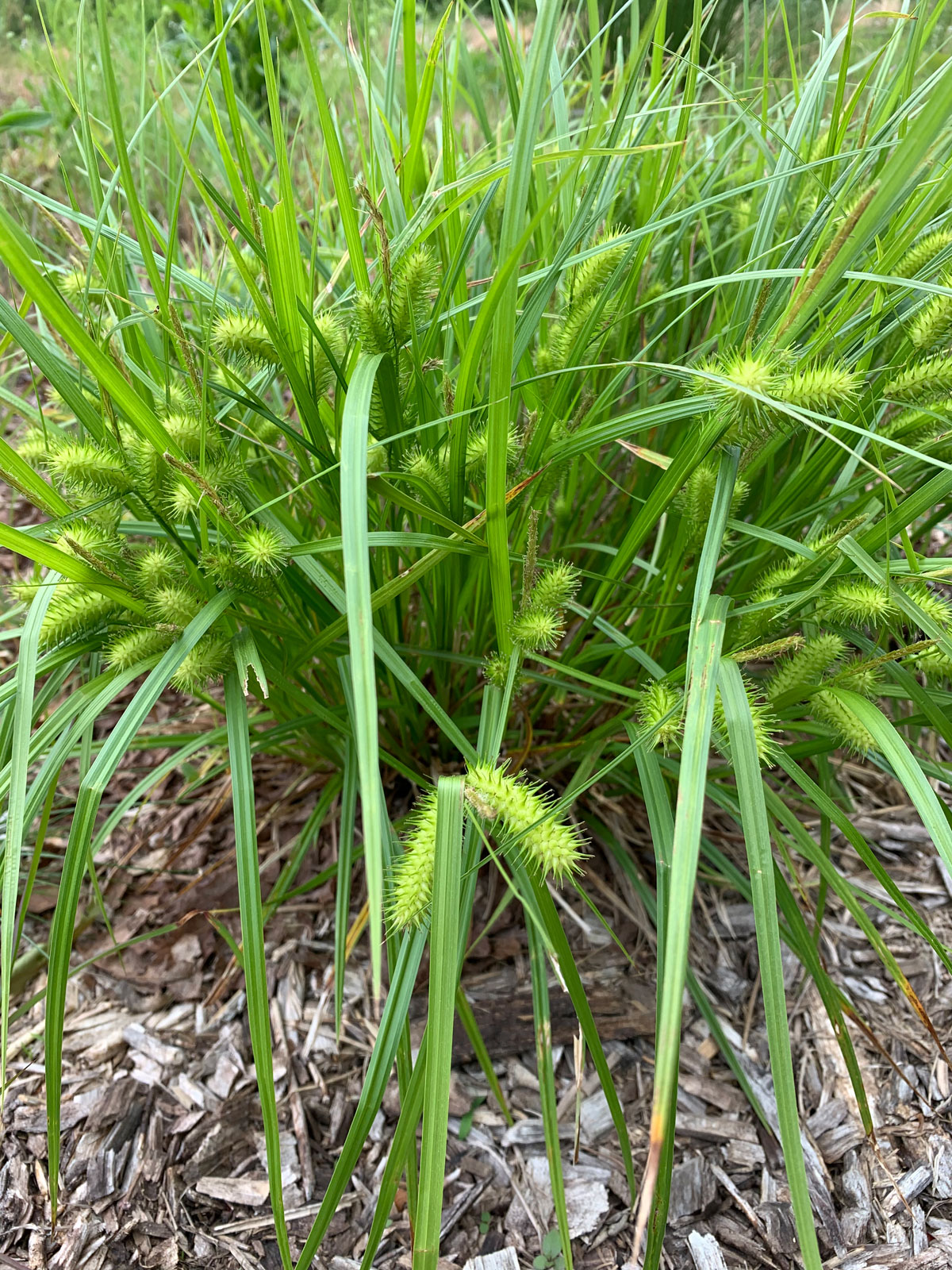Now, THIS was a difficult identification, but in the process I really learned a lot! Hats off to G. Rouse on the Virginia Native Plant Society Facebook group for the help in identifying this plant (over many months and stages of growth!)
I learned what “inflorescense” was and that these grasses actually have flowers along the stalk that I never considered as flowers. In the process I had to keep a close eye on the rush, so that I could document it’s growth for the proper identification.
This is a good sedge for the side of a pond or bog.
Alternate Names: Common Rush, Bog Rush, Mat Rush Size: 2-4' tall Family: Juncaceae (Rush Family) Habitat: Moist to wet soils in full sun. Identification: "Harvestbells or soapwort gentian, a perennial, grows 8-20 in. tall, having light-green, opposite, lance-shade leaves on slender stems. The blue-violet flowers are bottle-shaped, opening only partly, and occur in terminal or axillary clusters". From wildflower.org Blooms August-October Uses: In Japan, this rush is called igusa, and grown to be woven into the covering of tatami mats (the filling is rice straw, extruded styrofoam, chip board, or some combination). In Iran and Afghanistan too it is used to weave light cheap mats. It is called halfa (حلفا) and has medicinal uses too. In Europe, this rush was once used to make rushlights (by soaking the pith in grease), a cheap alternative to candles. From wikipedia
















